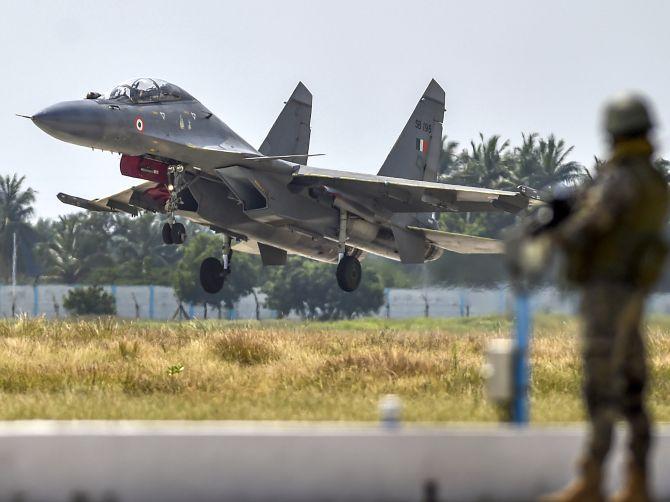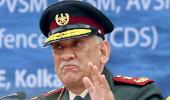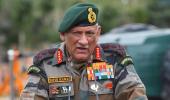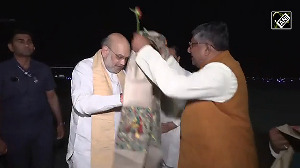In the early part of the Kargil operations, the army opted to more or less go it alone, sacrificing large numbers of men and officers in almost superhuman struggles against an enemy on higher ground.
Some generals seem to think their predecessors would have succeeded better if they had had air resources at their disposal, points out David Devadas.

The Indian Air Force has reason to feel miffed. It performed heroically in the 1965 and 1971 wars after it was kept out of the war in 1962, when it could have given the country an edge.
Now, the reorganisation of the forces threatens to turn the air force into largely an adjunct of the army, to be used when and if the army commander of the eastern or western theatres decides that his infantry or tanks require 'air support'.
In a public spat with the air chief, the chief of defence staff went so far as to compare the role of the air force to that of the army's engineers.
His plan, which has been animatedly discussed in newspapers over the past fortnight and on prime time TV, is evidently rooted in the framework of the two world wars. That is plain wrong more than a century after the first of those awful millions-of-men-consuming wars.
Even during the second world war, battles were not always skirmishes between tanks or infantry battalions, with pilots strafing the other side to blunt the attack on their own soldiers.
The crucial Battle of Britain was fought between the air forces of Germany and Britain in 1940, with some additional planes flown by naval, Polish, US, and other pilots defending Britain.
That battle was the first major turning point of that war -- before Moscow, Pearl Harbour, and Stalingrad. If the RAF had been wiped out, as Hermann Goering had planned, the way would have been clear for Germany to invade Britain.
Air forces have since become far more potent. Technology now allows fighter planes to swoop deep into enemy territory undetected at twice or thrice the speed of sound. They can destroy enemy command posts or degrade the enemy's assets, without their armies needing to go that far.
Their craft is an art, not just a supportive back-up -- and progressively so as technology advances.
As things stand, the plan to gear up defence for future wars does not seem to have sufficiently taken on board emergent trends, leave alone future scenarios.
Sad to say, my interactions over the past five years indicate that India's security set-up, including the army, did not really wake up to the threat from a belligerent China until about a year after the PLA intruded last year.
Even now, Indian strategists' response seems characteristically reactive and defensive. The plan apparently envisages a separate air defence command, but seeks to place some of the air force's assets under the army officers who would command the eastern and western theatres, and the admiral heading the integrated naval command.
How much under each is not yet in the public domain, but it will mean that an army or naval commander would decide how, where, and when the air assets under his command are to be deployed.
One retired vice chief of air staff, who did not want to be named, remarked caustically over the weekend that this would reduce the air chief to chief trainer -- of pilots who would serve those theatre commanders.
For, although the reorganised eastern and western commands are intended to be integrated commands, the commander-in-chief of each is to be an army officer, with an air marshal by his side but under his command.
Over the past few years, the air force has already been given far fewer new aircraft than it requires. It currently has about 30 squadrons, though its sanctioned strength is 42 squadrons.
Many of the planes are old. Three Bison squadrons will be out of service by 2025. In 2007, the Cabinet had approved the purchase of 126 new fighter jets, but that became just 36 Rafales in 2015. One hopes the indigenously-produced single-engine Tejas will fill the gap to some extent.
In the 1962 War and in the early part of the Kargil operations, the army opted to more or less go it alone, sacrificing large numbers of men and officers in almost superhuman struggles against an enemy on higher ground.
Some generals seem to think their predecessors would have succeeded better if they had had air resources at their disposal.
They might consider whether acknowledging the expertise of air force officers, and coordinating smoothly with them, might be a wiser alternative.
That would be true jointmanship.











 © 2025
© 2025